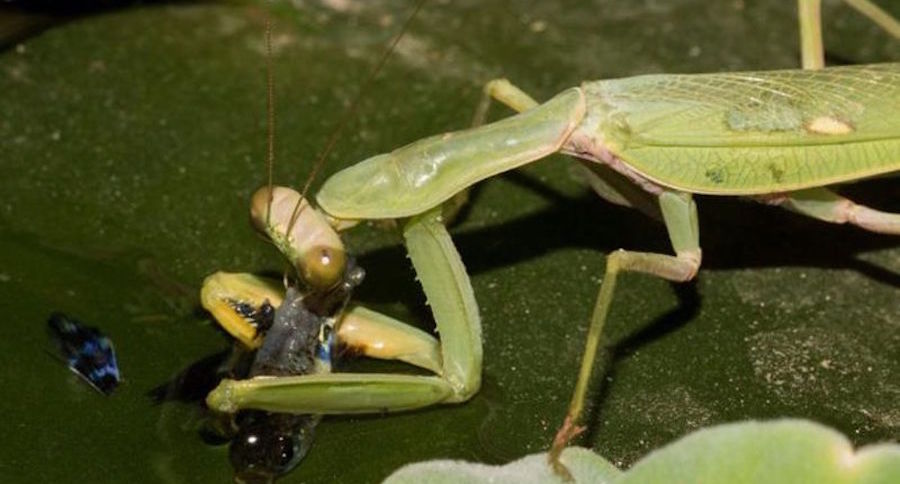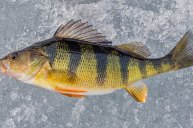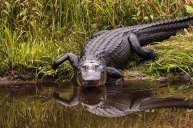A praying mantis was seen hunting fish for the very first time.
Praying mantises are fascinating and extremely beneficial insects for pest control. Known for their triangular heads, large compound eyes and of course, their tell-tale forelegs that they use to snatch grasshoppers and other prey items. Praying mantids are known for being some of the best ambush predators of the animal kingdom. That carnivorous nature and cases of sexual cannibalism of their mates during or after copulation by many adult female mantis specimens has given them quite the reputation.
For many mantis species, there doesn't seem to be much limit to what they'll eat. It's whatever they can catch with those distinctive front legs. As further proof of that, Jake Buehler of National Geographic reported that conservationist Rajesh Puttaswamaiah observed that a giant male Asian mantis had been seen returning to the same rooftop water garden for five consecutive nights to hunt for small fish.
Since mantises are known to be spectacularly aggressive hunters, it's not all that unusual for them to be observed hunting successfully, but hunting for fish is another story. Mantises have been observed preying on and eating lizards, mice, snakes, and even hummingbirds, but this particular mantis was catching guppies, and at night to boot.
Since Puttaswamaiah and his fellow researchers were surprised that this praying mantis could see well enough to catch fish in the dark, they needed to understand why. Entomologist Roberto Battiston said,"[A] mantid's eye doesn't work like ours. They see movements better than shapes or colors. The [guppies] have a large tail they move like a flag while swimming, and it may have resembled to the mantid a strange bug scampering around."
This specific mantis visited the water for five nights in a row, eating around two fish each night, catching nine in total. Even though research shows that the insect's large eyes "clearly indicates that they have evolved to prey in daylight" this one chose not only the night, but to hunt in the water, which as Battiston says presents another "visual barrier" as well.
As with many predators, the praying mantis certainly seems capable of complex learning. Since it returned multiple times to the same spot where it was successful, and targeted the same prey, it shows that "This behavior sounds very much like a precise hunting strategy—not random choices."
It still comes down to the fact that this was one finding based on one mantis. It's unknown if other mantis species like the European Mantis (mantis religiosa) or the Carolina Mantis (stagmomantis carolina), two species common to North America feed on fish. We're inclined to believe they will if the opportunity presents itself. Just based on all the videos there are of mantises feeding on humming birds and other large prey items here in the United States alone. Certainly further studies by the scientists will need to be made to corroborate the findings.
Cover photo via Smithsonian
Looking for a little more? Follow my webpage, or on Facebook and Twitter.
NEXT: NIGHTMARE FUEL: 7 TIMES A PRAYING MANTIS NAILED A HUMMINGBIRD OFF A FEEDER
WATCH




